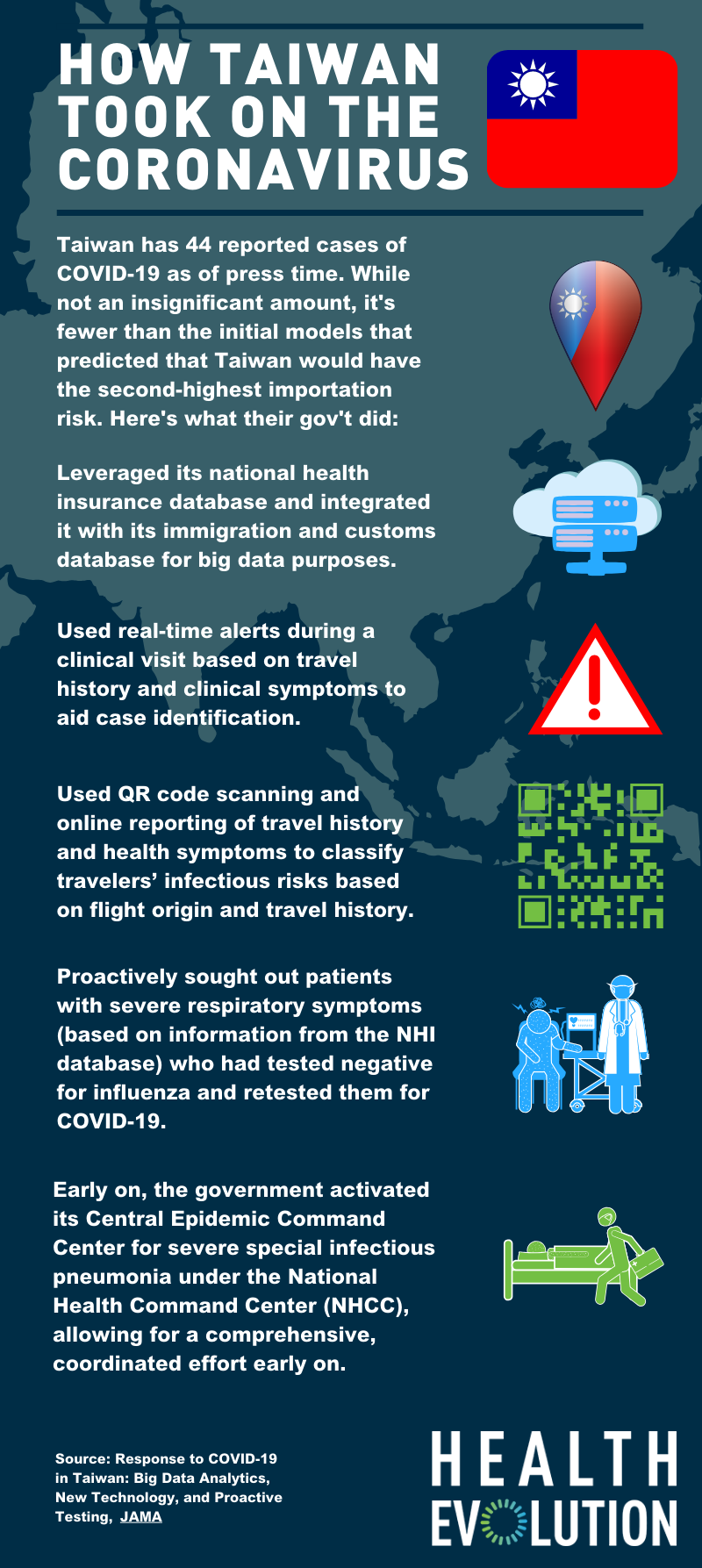Taiwan, only 81 miles off the coast of mainland China, was supposed to feel the full effect of the coronavirus (COVID-19) due to its proximity to and number of flights between China. Instead, the country of 23 million citizens, which saw 2.71 million visitors from the mainland in 2019, has only had 44 cases of the epidemic thus far (as of press time).
While the disease is spreading at a rapid rate in other parts of Asia, as well as North America and Europe, it’s been slowed significantly in Taiwan. Researchers from Stanford University School of Medicine, The Koo Foundation Sun Yat-Sen Cancer Center in Taipei, Taiwan, the University of California School of Medicine and the RAND Corporation examined how Taiwan has been able to do it.
The Taiwanese government is using a combination of proactive testing, big data analytics, and new tech innovation to keep coronavirus rates down, according to the research in JAMA.
This includes leveraging its national health insurance (NHI) database and integrating it with its immigration and customs database for big data analytics, usage of clinical real-time alerts, and QR scanning and online reporting of travel history and health symptoms to classify travelers’ infectious risks based on flight origin and travel history in the past 14 days. They also sought out patients with severe respiratory symptoms based on the NHI database.
The above infographic outlines a few of the steps the Taiwanese government took.
Source: https://jamanetwork.com/journals/jama/fullarticle/2762689#note-JVP200035-1











